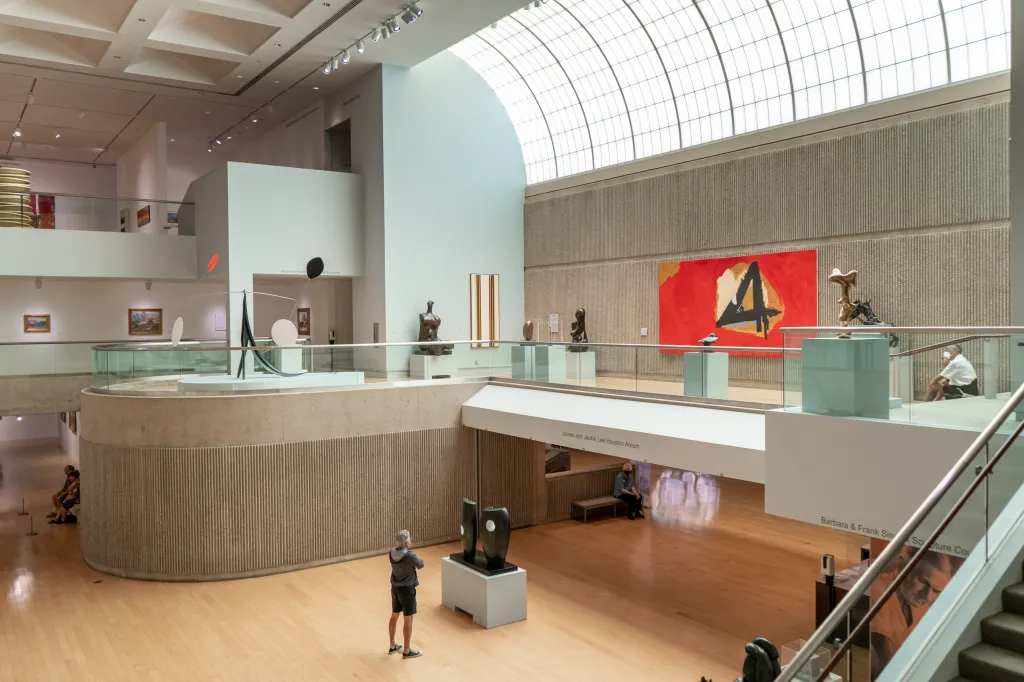A Los Angeles Times investigation of the finances of the Palm Springs Art Museum claims there are significant problems at the California institution. The museum has issued a statement calling the Times’s reporting into question.
The paper claims that after a January audit, accounting firm Eide Bailly attached to its report a “letter of material weakness,” a standard practice that alerts the client to what the paper calls “the reasonable possibility that its internal statements are significantly out of whack.” Since then, “at least eight” trustees, or a third of its board, have reportedly resigned. These departures, one apparently based on legal counsel, have left 19 members, short of the 20 required in the museum’s by-laws, says the report.
Eide Bailly reportedly pointed to a “deficiency in internal control” at the institution, highlighting “problems with reporting of endowment spending, improper recording of the market value of donated and deaccessioned art, and faulty recording of admissions revenues.”
The museum takes issue with the Times’s reporting, saying, “We respect the role of an independent press. At the same time, the column is based on selective internal correspondence and does not fully reflect the work we have done with our auditors and outside advisors over the last several years. Some of its characterizations of the museum’s financial condition and board oversight are not consistent with the facts as understood by our board, management, auditors, and independent consultants.”
Board chair Craig Hartzman says in a statement to ARTnews that “Our financial reviews over the past several years have been thorough and deliberate, supported by independent experts who helped us evaluate and refine our practices. The matters identified in 2021 provided a clear path for improvement, and we have followed that path with focus and consistency. The full board has been briefed throughout this process, and everyone who has served during the past four years has been aware and supportive of the work underway. We are close to completing the final item from that review, and the board remains fully committed to maintaining the museum’s financial integrity.”
As for the trustee departures, says the museum’s statement, “As is typical for a nonprofit board of this size, trustees leave for a range of reasons, including the end of their term prescribed in our bylaws (three years), personal and professional commitments, relocation, and, in some cases, differences of view on governance. And sometimes they simply develop personal grievances based on differences of opinion and other factors.”
The Palm Springs Art Museum.
Lance Gerber, courtesy Palm Springs Art Museum.
One trustee’s notes, shared with the Times, indicate a discrepancy in the reported value of the endowment, which dropped by $3 million between 2019 and 2020. Former trustee Kevin Comer, a former managing director at Deutsche Bank in New York, wrote in his notes that “This is always a red flag.” Comer, the Times points out, also taught accounting and fiduciary management techniques at the Ohio State University.
In a letter obtained by the Times, Comer says he resigned from the museum’s board on his attorney’s advice and that he would urge the museum to hire a law firm and a forensic accounting firm. He says this isn’t the first time a task force has made that recommendation.
“We do not comment on the contents of individual resignation letters, even though the column specifically referred to the resignation letter of one of the two board members who recently resigned,” says the museum’s statement. “We can only wonder how and why the Los Angeles Times obtained the letter.”
Per the museum, Comer’s advice may have been heeded: “Earlier this year, in response to questions raised about historical accounting practices, the board also engaged independent outside professionals—including an accounting consultant and legal counsel—to review those matters and report their findings. Their work was presented to the board, and any additional recommendations will continue to be considered as part of our normal oversight process.”
The notes suggest that the $3 million discrepancy may have stemmed from a change of some funds from restricted to unrestricted status, which could allow money donated for specific purposes to be reallocated. The reclassification of that money allowed the museum to meet operating shortfalls, the notes say. The Times speculates that the reclassification may have been intended to create a false impression of fiscal soundness.
The museum’s current endowment is just over $17 million, not a large fund, says the paper, compared to the museum’s annual operating budget of about $10.5 million. In an email, Hartzman refuted that characterization, saying, “Endowment sizes vary widely in the museum field, and there isn’t a single ‘correct’ ratio between endowment and operating budget.”
“Endowment draws over the past decade totaled roughly $8 million, and contributions to the endowment totaled roughly $500,000,” the notes report, adding, “Most years the museum operated at a loss, including for the last three years when the board believed we were profitable.” The notes also indicate that while a five-person executive committee “may have been aware” of pressing financial problems, the wider board was not kept informed.
“Bottom line,” says Comer’s resignation letter, “this is a leadership group that doesn’t know what it doesn’t know, and that is the most dangerous place in which an institution can be placed.”
“Palm Springs Art Museum takes its fiscal and fiduciary responsibilities seriously and is committed to operating with transparency and accountability,” says the museum’s statement. “We will continue to publish our audited financial statements and IRS Form 990 tax returns [on this website], and we are preparing additional plain-language information to help anyone interested understand our finances and governance practices.”

